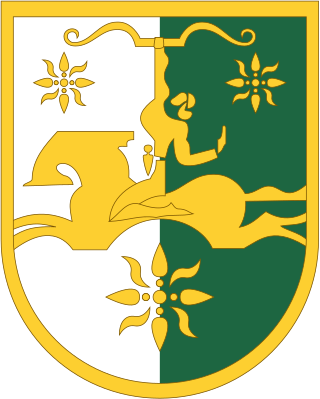
Politics in Abkhazia is dominated by its conflict with Georgia. Abkhazia became de facto independent from Georgia after the 1992–1993 war, but its de jure independence has only been recognised by a few other countries. Abkhazia is a presidential representative democratic republic with a multi-party system, wherein the President is both head of state and head of government. Executive power is exercised by the government of the Republic of Abkhazia. Legislative power is vested in both the government and the People's Assembly of Abkhazia.
The Kodori Valley, also known as the Kodori Gorge, is a river valley in Abkhazia, Georgia's breakaway autonomous republic. The valley's upper part, populated by Svans, was the only corner of the post-1993 Abkhazia directly controlled by the central Georgian government, which since 2006 officially styles the area as Upper Abkhazia. On August 12, 2008, Russo–Abkhazian forces gained control of the Upper Kodori Valley, previously controlled by Georgia.

The Abkhazia conflict is a territorial dispute over Abkhazia, a region on the eastern coast of the Black Sea in the South Caucasus, at the intersection of Eastern Europe and Western Asia. The conflict involves Georgia, Russian Federation and Russian-backed self-proclaimed Republic of Abkhazia, internationally recognised only by Russia, Venezuela, Nicaragua, Nauru, and Syria; Georgia and all other United Nations members consider Abkhazia a sovereign territory of Georgia. However, as of 2023, Georgia lacks de facto control over the territory.
Abkhazia is a region in the Caucasus that is under the effective control of the partially recognised self-declared Republic of Abkhazia. The de jure majority internationally recognized Autonomous Republic of Abkhazia claims to be its legitimate government.
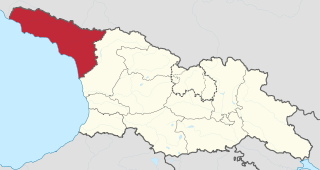
The Government of the Autonomous Republic of Abkhazia is an administration established by Georgia as the legal and only government of Abkhazia. Abkhazia has been de facto independent from Georgia – though with limited international recognition – since the early 1990s. Ruslan Abashidze, elected in May 2019, is the current head of the government-in-exile.

The history of Abkhazia, a region in the South Caucasus, spans more than 5,000 years from its settlement by the lower-paleolithic hunter-gatherers to its present status as a partially recognized state.

The Socialist Soviet Republic of Abkhazia was a short-lived republic within the Caucasus region of the Soviet Union that covered the territory of Abkhazia, and existed from 31 March 1921 to 19 February 1931. Formed in the aftermath of the Red Army invasion of Georgia in 1921, it was independent until 16 December 1921 when it agreed to a treaty that united it with the Georgian Soviet Socialist Republic. The SSR Abkhazia was similar to an autonomous Soviet republic, though it retained nominal independence from Georgia and was given certain features only full union republics had, like its own military units. Through its status as a "treaty republic" with Georgia, Abkhazia joined the Transcaucasian Soviet Federative Socialist Republic, which united Armenian, Azerbaijani, and Georgian SSRs into one federal unit when the latter was formed in 1922. The SSR Abkhazia was abolished in 1931 and replaced with the Abkhaz Autonomous Soviet Socialist Republic within the Georgian SSR.
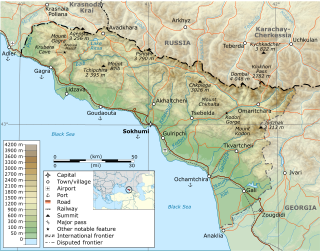
The War in Abkhazia was fought between Georgian government forces for the most part and Abkhaz separatist forces, Russian government armed forces and North Caucasian militants between 1992 and 1993. Ethnic Georgians who lived in Abkhazia fought largely on the side of Georgian government forces. Ethnic Armenians and Russians within Abkhazia's population largely supported the Abkhazians and many fought on their side. The separatists received support from thousands of North Caucasus and Cossack militants and from the Russian Federation forces stationed in and near Abkhazia.
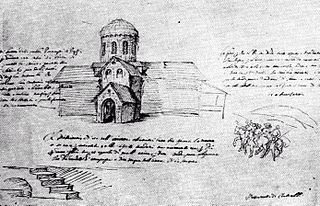
The Church of St. George of Ilori is a Medieval, originally Georgian Orthodox Church in the village of Ilori, in the Ochamchira District of Abkhazia, Georgia. The Church was built in the first quarter of the 11th century, and represents one of the most important sites of western Georgian architecture. It is also considered one of the more significant religious locations of Medieval western Georgia. The building has a single-nave design.
Vehicle registration plates of Georgia are composed of an embossed serial of two letters, a hyphen, three numbers, a hyphen, and two letters, in black on a white background with a blue vertical strip on the left. The plates are issued in the Latin alphabet. Georgian registration plates are the same size as the most common European registration plate. All plates have the abbreviation "GE" in the lower left corner of the plate and the national flag in the upper left corner. This set of new style registration plates have been in use since 1 September 2014.
The government of South Ossetia issues its own license plates for the vehicles registered on the territory it controls. The design of the plates is based on one of the Soviet standard for license plates.
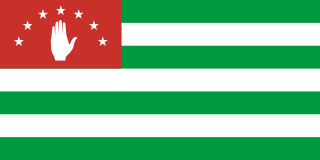
Abkhazia, officially the Republic of Abkhazia, is a partially recognised state in the South Caucasus, on the eastern coast of the Black Sea, at the intersection of Eastern Europe and Western Asia. It covers 8,665 square kilometres (3,346 sq mi) and has a population of around 245,000. Its capital and largest city is Sukhumi.
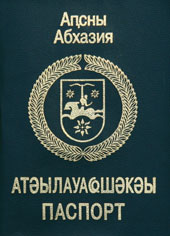
The Abkhazian passport is issued to citizens of the Republic of Abkhazia for the purpose of international travel and for the purpose of legal identification within Abkhazia. As Abkhazia is only recognised by Russia, Venezuela, Syria, Nicaragua and Nauru, for all other destinations Abkhazian citizens must use another passport for international travel.
Christianity is a main religion in Abkhazia. The history of introduction of Christianity in the present-day Abkhazia can be traced to the 1st century and in 325 the bishop of Pityus participated in the First Ecumenical Council in Nicaea. Since the late 9th century, the Orthodox dioceses of Abkhazia were subordinated to the Georgian Orthodox Church, later functioning there as the Catholicosate of Abkhazia.
Human rights in Abkhazia are granted by Chapter II of its Constitution which makes reference to adherence of Abkhazia to UDHR, ICCPR and ICESCR. However, Abkhazia is not a UN member state and is not a party of UN human rights treaties, unlike Georgia, whose sovereignty over Abkhazia is recognized by a bigger part of the international community.
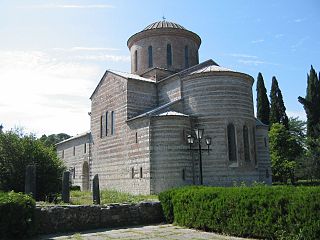
The Abkhazian Orthodox Church is an Eastern Orthodox church outside the official Eastern Orthodox ecclesiastical hierarchy. It came into existence when the Sukhumi-Abkhazian Eparchy declared on 15 September 2009 that it no longer considered itself part of the Georgian Orthodox Church and that it was "re-establishing the Catholicate of Abkhazia disbanded in 1795". Vissarion Aplaa is the Primate of the Abkhazian Orthodox Church since 2009 and is the self-proclaimed catholicos of the Church. It has two eparchies (dioceses) in Pitsunda and Sukhumi and is organized in 9 parishes.
The War in Abkhazia from 1992 to 1993 was waged chiefly between Georgian government forces on one side, Russian military forces on other side supporting separatist forces demanding independence of Abkhazia from Georgia. http://www.historyorb.com/russia/georgia.php Ethnic Georgians, who lived in Abkhazia fought largely on the side of Georgian government forces. Ethnic Armenians and Russians within Abkhazia's population, largely supported Abkhazians and many fought on their side. The separatists were supported by thousands of the North Caucasus and Cossack militants and by the Russian Federation forces stationed in and near Abkhazia.
Tourism in Abkhazia has been an important part of its economy. Visiting Abkhazia is technically illegal under the Georgian law, by which the Georgian government prohibits foreigners from entering the disputed territory. Abkhazia continues to be accessible for tourists coming from the Russian side of the Abkhazia–Russia border which is not under Georgian control. Low prices and an absence of any visa requirements attracts Russian tourists especially those who can not afford the vacations in Turkey, Egypt, Bulgaria and other popular Russian touristic directions.

Visitors to the Republic of Abkhazia must obtain an entry permit unless they are citizens of one of the visa-exempt countries.
This is an alphabetical list of Abkhazia-related articles.














